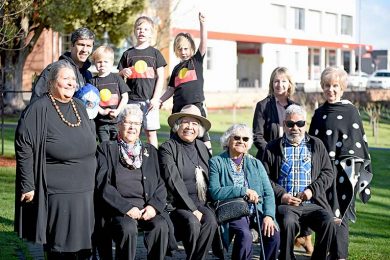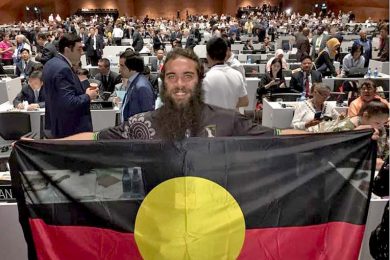

THE protection of one of Australia’s most important indigenous cultural sites has been secured for generations to come following its historic UNESCO World Heritage listing.
In an Australian first, the Budj Bim Cultural Landscape, located near Portland, has received world heritage protection for its Aboriginal cultural importance.
The landscape includes the Budj Bim Volcano and Tae Rak (Lake Condah), as well as the Kurtonitj component, characterized by wetland swamps and Tyrendarra in the south, an area of rocky ridges and large marshes.
The Budj Bim lava flows, which connect these three components, have enabled the Gunditjmara to develop one of the largest and oldest aquaculture networks in the world.
The Gunditjmara community has worked towards this result for 40 years, focussing its efforts in partnership with the Winda-Mara Aboriginal Corporation through the Budj Bim Development Partnership in 2002.
Gunditj Mirring Traditional Owners Aboriginal Corporation RNTBC chair Denise Lovett said the announcement was a “very special day” for the Gunditjmara community.
“This landscape has provided and cared for us as Gunditjmara people as we have cared for it over many thousands of years,” she said.
“Budj Bim is immensely important to Gunditjmara people and our continuing connection
to the country.
“The decision also recognises Budj Bim’s significance to all of humanity and we are so proud to now be able to share the achievements of our Gunditjmara ancestors and the Budj Bim story with the world.”
Glenelg Shire Mayor Anita Rank also commented on the importance of the Australian first decision stating Budj Bim will “forever be etched in the nation’s storybook”.
“This announcement is testament to 40 years of diligent hard work and persistent lobbying by the Gunditjmara community who have passionately shared their ancestral stories,” she said.
“This listing will assist to preserve the culture of this land and ensure sustainable development in the future whilst progressing the continuing path of reconciliation.”
The Budj Bim Cultural Landscape spans almost 100 square kilometres and features what is believed to be the world’s oldest freshwater aquaculture systems.
Alongside the aquaculture systems, the Gunditjmara ancestors also built a large settled society along the stony wetlands with evidence of stone house sites
still prevalent along the landscape.
Over six millennia the Gunditjmara people used the abundant local rock to also engineer channels, eel traps, weirs and ponds to manage water flows from Lake Condah.
Traditional owner Denis Rose said the overall outcome had been a whole of community effort.
“For us to get to this stage it has been a long journey but I would like to acknowledge our Gunditjmara ancestors who have led the way for us,” Mr Rose said.
“We know they are still here with us, their ingenuity still shows in the aquaculture systems that are still operational to this day.”
The southwest Victorian sector was listed on the Australian Heritage List in 2004 and the return and restoration of Lake Condah in 2010 had work start in 2012 with a revitalised effort.
The Budj Bim will now join 19 other iconic attractions such as the Great Barrier Reef, Sydney Opera House and Kakadu National Park on the global list.









